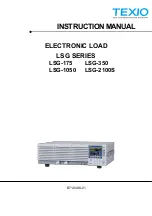
exit trench, stop the traction unit, push the auxiliary
hydraulics lever into neutral, and stop the engine.
14. If the boring bit has not yet entered the exit trench,
complete the following:
A. Detach the rod from the drive head.
B. Start the engine and back up to the end of the
entrance trench.
C. Stop engine and wait for all moving parts to
stop.
D. Connect another rod and repeat steps 11
through 14.
Reaming the Hole
1. With a shovel, carefully dig around the boring bit
clearing it of soil until it can be removed (Figure 5).
Figure 5
1.
Sidewalk or driveway
4.
Reamer
2.
Exit trench
5.
Swivel
3.
Shovel dug area around
bit
2. Remove the boring bit and attach the reamer
3. Attach the cable or piping being installed to the
swivel on the end of the reamer (Figure 5).
4. Start the engine and pull the auxiliary hydraulics
lever rearward to start the reamer.
5. Slowly move the traction unit rearward as the
reamer digs into the soil.
Important:
Do not drive too fast, forcing
the reamer into the soil. Allow the reamer to
progress at its own rate. Never push or pull the
reamer through the soil when the drive head
is not turning.
6. When a rod coupling is about 6 inches (15 cm) into
the entrance trench or when the reamer completely
enters the trench with about 6 inches (15 cm) of
the cable or piping, stop the traction unit, pull the
auxiliary hydraulics lever into neutral, and stop
engine.
7. If the reamer has not yet entered the exit trench,
complete the following:
A. Detach the rod from the drive head and rod still
in the soil.
B. Start the engine and move to the front of the
entrance trench.
C. Stop the engine and wait for all moving parts
to stop.
D. Connect the drive head to the rod shaft in the
soil.
8. With the reamer and cable/piping in the entrance
trench, remove the cable or piping from the reamer.
7
Содержание Sitework Systems 22420
Страница 10: ...Notes 10...
Страница 11: ...Notes 11...

















